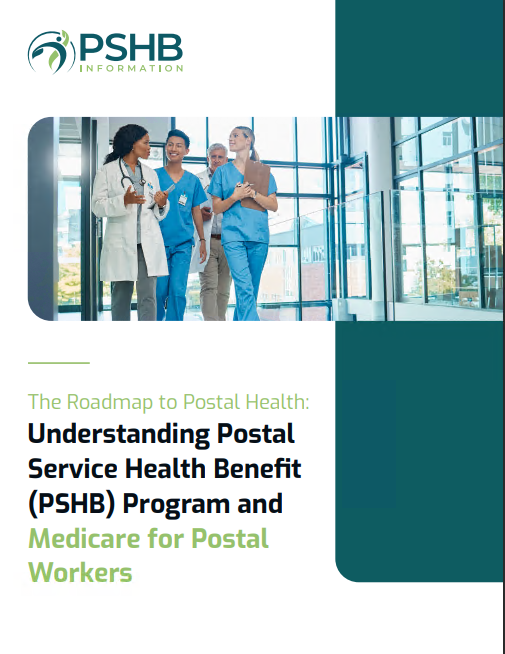Key Takeaways
- The PSHB (Postal Service Health Benefits) program introduces new healthcare options for U.S. Postal Service employees and retirees, set to launch in January 2025.
- With changes on the horizon, it’s essential to understand the transition process and how PSHB differs from existing programs under the Office of Personnel Management (OPM).
PSHB and OPM: What to Expect as the New Health Benefits Program Takes Shape
The U.S. Postal Service (USPS) and the Office of Personnel Management (OPM) are preparing for a significant shift in healthcare benefits with the introduction of the Postal Service Health Benefits (PSHB) program. Slated to launch in January 2025, PSHB is a result of the Postal Service Reform Act (PSRA) of 2022, which mandates that postal employees and retirees move to this new system, separate from the Federal Employees Health Benefits (FEHB) program. As this transition unfolds, understanding the changes, implications, and steps to take becomes crucial for all affected parties.
The Background and Purpose of PSHB
The PSHB program was established by the Postal Service Reform Act (PSRA) of 2022, which aimed to address the financial sustainability of USPS while ensuring continued health coverage for its workforce. The PSHB is designed to replace the current FEHB program for postal workers and retirees, providing a tailored health benefits system specific to the needs of USPS employees. This transition is part of broader reforms intended to stabilize the financial condition of the USPS by reducing the cost burden of health benefits on the organization.
Key Differences Between PSHB and FEHB
The PSHB program introduces several changes compared to the existing FEHB program. Firstly, while FEHB serves all federal employees, PSHB is exclusively for USPS employees and retirees. This distinction allows the PSHB to be more closely aligned with the specific needs of postal workers. Additionally, PSHB will likely include different plan options and premium structures compared to those available under FEHB. For example, PSHB may offer plans with coverage more suited to the demographics and health requirements of the postal workforce.
Another significant change is the mandate for most postal retirees to enroll in Medicare Part B if they want to continue their coverage under PSHB. This integration of Medicare is designed to reduce the overall costs for the PSHB program by leveraging the federal Medicare system for retirees’ primary coverage. Those retirees who are already covered by Medicare Part B will transition more seamlessly into PSHB, while those who have not yet enrolled will need to do so during a specified enrollment period.
What Postal Employees and Retirees Need to Know
For active USPS employees, the transition to PSHB will require reviewing and potentially adjusting their current healthcare plans. While the specific plan options under PSHB have not yet been fully detailed, employees can expect communications from USPS and OPM outlining the available choices and how they compare to their current FEHB plans.
Retirees, especially those nearing Medicare eligibility, should pay close attention to the new requirements under PSHB. Since enrolling in Medicare Part B will be mandatory for most retirees, it’s essential to understand the implications this has on both costs and coverage. Retirees currently not enrolled in Medicare Part B will need to assess the cost of premiums versus the benefits of maintaining PSHB coverage.
Additionally, USPS employees approaching retirement should start planning for this transition well ahead of time, ensuring they meet the necessary criteria and understand the financial implications of the PSHB-Medicare integration. The period leading up to January 2025 will be crucial for all affected individuals to review their options and make informed decisions about their healthcare.
Preparing for the Transition
The transition to PSHB is a significant change, and USPS employees and retirees should start preparing as early as possible. Here are some practical steps to take:
-
Stay Informed: Regularly check USPS and OPM communications for updates on the PSHB program. These updates will provide important details about plan options, enrollment periods, and any actions required on your part.
-
Review Your Current Coverage: Compare your current FEHB coverage with the anticipated PSHB options. While exact details may not yet be available, understanding your current needs and how they may change in the future will help you make better decisions when the time comes.
-
Evaluate Medicare Enrollment: If you are a retiree or nearing retirement age, consider your Medicare Part B enrollment status. Since PSHB will likely require Medicare Part B participation, it’s essential to understand the costs and benefits of enrolling.
-
Consult a Licensed Insurance Agent: To navigate the complexities of the new program, consider consulting with a licensed insurance agent who can provide personalized advice based on your individual situation. They can help you understand the implications of the transition and explore the best options for your health coverage.
-
Prepare Financially: The integration of Medicare and the new PSHB program may alter your healthcare costs. Begin budgeting now to accommodate any potential increases in premiums or other out-of-pocket expenses that may arise during the transition.
Timeline of the PSHB Rollout
As of now, the key date to keep in mind is January 2025, when the PSHB program is scheduled to go live. Leading up to this date, several important milestones will help guide USPS employees and retirees through the transition:
-
2024: OPM and USPS are expected to release detailed information about the PSHB plan options, premium rates, and specific enrollment instructions. This will be the time to thoroughly review your options and make necessary adjustments.
-
Mid-2024: A special enrollment period for Medicare Part B is likely to be announced for those retirees who are not yet enrolled. During this period, eligible retirees can sign up for Medicare Part B without the typical late enrollment penalties.
-
Late 2024: Final decisions regarding plan selections under PSHB will need to be made. Ensure all necessary paperwork is completed and submitted by the deadlines provided by USPS and OPM.
The Role of OPM in the Transition
The Office of Personnel Management (OPM) will play a pivotal role in overseeing the transition to the PSHB program. OPM’s responsibilities include negotiating plan options with insurance carriers, setting premium rates, and ensuring that the transition process is as smooth as possible for USPS employees and retirees.
In addition to its administrative duties, OPM will provide educational resources and support to help individuals understand the new system. This includes detailed guides, online tools, and customer service support to address any questions or concerns that may arise during the transition.
OPM’s involvement ensures that the PSHB program maintains the high standards of coverage and care that federal employees and retirees have come to expect from the FEHB program, while also tailoring the new system to the specific needs of the USPS workforce.
Potential Challenges and Considerations
While the PSHB program aims to provide a more sustainable and tailored healthcare option for USPS employees, the transition is not without its challenges. Some potential issues to be aware of include:
-
Complexity of Enrollment: With the introduction of PSHB, employees and retirees may face a more complex enrollment process, particularly if they need to navigate both Medicare and PSHB requirements. Understanding these processes and completing them on time will be critical to maintaining uninterrupted coverage.
-
Changes in Coverage Options: As PSHB will be a new program, there may be differences in the coverage options compared to what employees and retirees are used to under FEHB. It’s important to carefully review these changes to ensure that the selected plan meets individual healthcare needs.
-
Financial Impact: The integration of Medicare Part B with PSHB may result in additional costs for retirees. Understanding these costs and planning accordingly will be essential to avoid any financial strain during the transition.
USPS Workforce: A Closer Look
The USPS workforce is unique in its demographics and healthcare needs, which is why a program like PSHB was deemed necessary. USPS employees often have different health risks and coverage needs compared to the broader federal workforce, influenced by the physical demands of their jobs and other factors.
The PSHB program is expected to offer plan options that reflect these unique needs, possibly providing more robust coverage for conditions prevalent among postal workers. This focus on tailored benefits is a key difference from the broader FEHB program, which serves a more diverse range of federal employees.
Final Thoughts on Navigating the New Health Benefits Program
As the PSHB program takes shape, staying informed and proactive is crucial for all USPS employees and retirees. Understanding the differences between PSHB and FEHB, preparing for the transition, and considering the financial implications will help ensure a smooth shift to the new health benefits program.
Those who take the time to review their options, consult with professionals, and plan ahead will be better positioned to navigate this significant change in their healthcare coverage. While the transition to PSHB represents a new chapter in USPS health benefits, it also offers an opportunity to secure coverage that is more aligned with the specific needs of postal workers and retirees.
Contact Information:
Email: [email protected]
Phone: 3615551234






